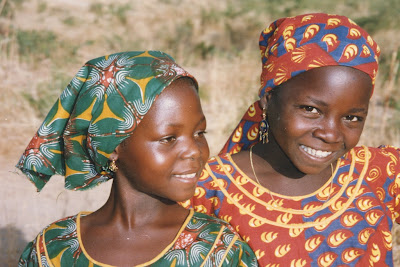
I recently wrote a paper about the "invisibility" of women in Public Health. I discussed how if women were made more visible in this field, we would see drastic improvements in the human condition. The following are some of the conclusions from that paper:
These appalling practices certainly highlight the list of health disparities, and emphasize the incredible need for something drastic to be done. Not only should women be treated as equals in global health simply because it is their right as human beings, but humanity has much to gain from their amelioration to full visibility. Research has demonstrated that “focusing on women is often the best way to reduce birth rates and child mortality; improve health, nutrition, and education; stem the spread of HIV/AIDS; build robust and self-sustaining community organizations; and encourage grassroots democracy” (Coleman, 2004, emphasis added). The face of public health would be utterly transformed with the full reform of female status to equal sharers of health opportunities and global visibility. Dr. J.E. Kwegyir Aggrey once stated that “The surest way to keep a people down is to educate the men and neglect the women. If you educate a man you simply educate an individual, but if you educate a woman you educate a family" (The World Bank, 2009). Certainly this statement holds true for the matter of female health, as well. When a woman is healthy, she will create a healthy family. Even women who are unhealthy frequently invest more time and effort towards their families’ health than anyone else.
Women are also often the most dedicated health advocates, as demonstrated in the film Water for Tounaumasse (Filmaker’s Library, 1987). First it took a female expert visiting the community, and then a group of women on the village council, to really get the power and ingenuity needed to establish a clean water source in the village. Women often have the most invested in their children and communities, and are the most willing to invest even more in the health of their loved ones. Frequently, women work longer hours than men and contribute more to the family income, even though they often make much less. Research has shown that when women and girls earn income, they “reinvest 90 percent of it into their families, as compared to only 30 to 40 percent for a man” (Borges, 2007). Regarding work outputs, researchers in Kenya have concluded that if men’s average input levels were transferred to female maize farmers, yields would increase by 9 percent (Moock, 1976). Additionally, total household output could be increased by 10 percent to 20 percent if even “some of the inputs from the male-controlled plots went to the plots controlled by women” (Mehra & Rojas, 2008). If given these improvements, women would undoubtedly provide healthier and more frequent meals for their children, decreasing the staggering numbers of undernourished children in the world today. But in order for women to successfully accomplish this, they need to be healthy themselves.
Finally, if the unfathomable rate of maternal deaths in the developing world could be curbed, it is amazing to imagine the effect of the mothers who would live. Rather than opening new orphanages, we could be shutting them down. Mothers would no longer die unnecessarily in child birth. Reducing the current maternal mortality rate is in fact manageable, for the vast majority of maternal deaths could be prevented if women had “access to quality family planning services, skilled care during pregnancy, childbirth and the first month after delivery” (WHO, 2009). These fairly simple health projects would not only extend the lives of the world’s mothers, but deeply impact the lives of their children and communities.
As Secretary of State and former First Lady Hilary Clinton stated so eloquently, “What we are learning around the world is that if women are healthy and educated, their families will flourish. If women are free from violence, their families will flourish. If women have a chance to work and earn as full and equal partners in society, their families will flourish. And when families flourish, communities and nations do as well” (Clinton, 1995). Truly, increasing, female health is the missing link to improving universal public health. Women around the world have forever been the nurturers of society, and have demonstrated that they are capable of initiating incredible change in the lives around them. It is time to truly address the “vulnerable” group of women by making them full partners in health and entirely visible as human beings. By empowering women to successfully achieve healthy lives, the whole world will be empowered. For as we’ve seen, to make a woman healthy is to make her family healthy-- and if we follow where that leads us, we’ll find the world a healthier place.



No comments:
Post a Comment